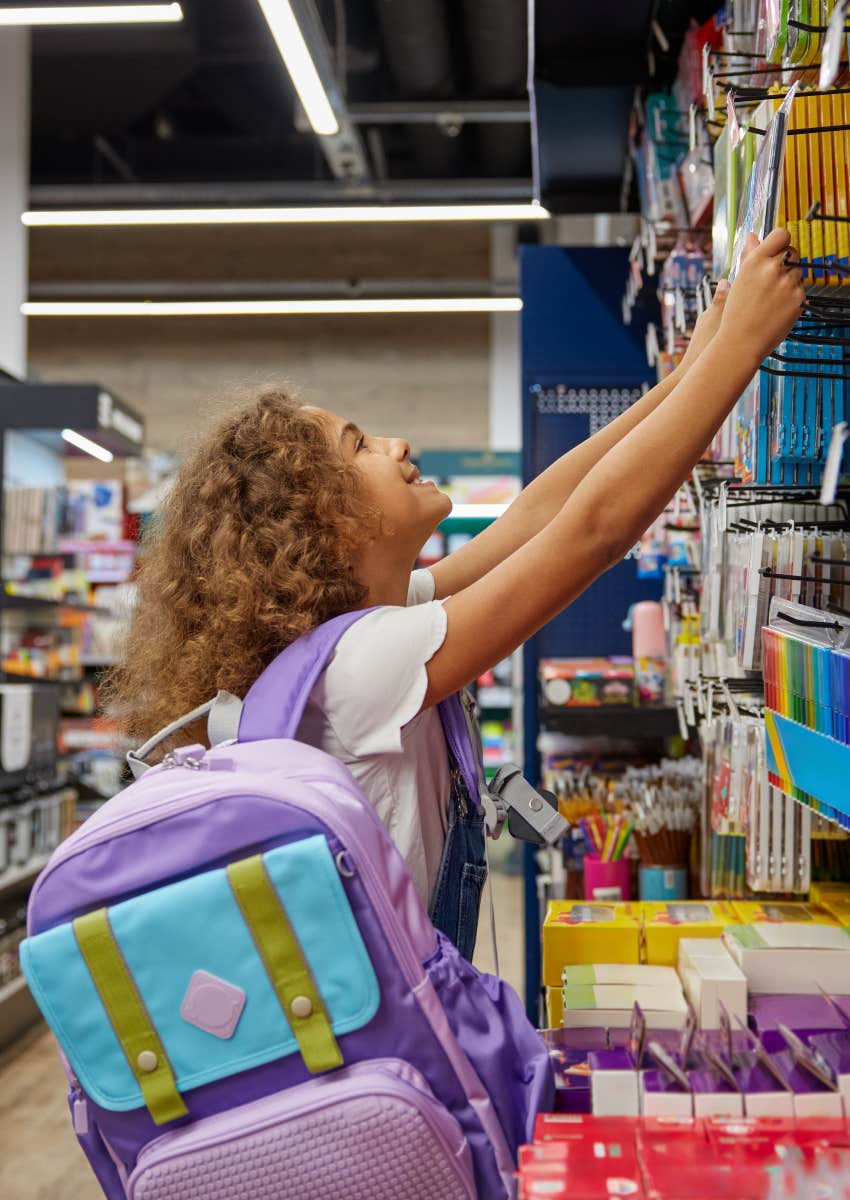Survey Finds More Than Half Of Parents Are Having To Choose Between Groceries And School Supplies For Their Kids
We should never have to pick one or the other.
 Prostock-studio | Shutterstock
Prostock-studio | Shutterstock School supply shopping was one of my favorite things to do as a kid. I know there are other people out there who also loved picking out cool notebooks, fresh pencils, and a new backpack. Unfortunately, this school year is bringing financial challenges for many families, making them sacrifice other necessities so their kids can be prepared. In fact, the state of the economy is so volatile that many parents are forced to choose between food for their family and back-to-school shopping.
A new survey found that more than half of parents must choose between buying groceries and buying school supplies for their kids.
New data from Intuit Credit Karma reveals some concerning choices that parents are being forced to make. Out of all the surveyed parents with at least one child going back to school this upcoming year, 39% said they are unable to afford buying school supplies. This number has increased by 5% since 2024. Forty-four percent anticipate taking on debt just to afford what their child needs for school.
 Nomad_Soul | Shutterstock
Nomad_Soul | Shutterstock
If that's not bad enough, over half of the parents surveyed (54%) plan to sacrifice groceries and other necessities in order to ensure their children get school supplies. Kids need more than just pencils and paper, and 38% of parents anticipate spending between $501 and $1,500 on back-to-school expenses.
Money troubles are even affecting kids' ability to participate in extracurricular activities, with 45% claiming they can't afford after-school programs, sports, and clubs. This is a problem because it also means that parents have to consider leaving their jobs or cutting their hours (32%).
Parents are willing to do whatever it takes to get back-to-school shopping done.
In order to make their savings go farther, parents said they've had to get creative and more resourceful than ever. Amazon Prime Day was one of the most popular ways, with 69% parents taking advantage of deals, as well as other summer and back-to-school sales.
Parents also said they are relying heavily on other money-saving strategies, such as comparison shopping (73%), shopping at discount stores (69%), using buy-now, pay-later services like Klarna or Afterpay (44%), and repurposing hand-me-downs or borrowed items (41%).
Many parents (67%) confessed they feel that much more financial responsibility has been placed on them than in previous years. Though some still shop for a list provided by the school or a teacher, 23% said they use a shared classroom sign-up sheet, and 21% said they have to buy supplies for their children and for the entire class to use.
Social media trends are influencing what back-to-school items children are asking for.
The basics aren't cutting it anymore. Half of the surveyed parents (51%) reported their kids were asking for things they saw on social media that aren't really necessary for school. Trendy items like expensive water bottles, bag charms, and high-tech electronics were on many kids' wish lists.
 ANNA GRANT | Shutterstock
ANNA GRANT | Shutterstock
Even if they can't afford it, parents said they are hesitant to say no. Fifty-two percent were concerned that their child would be left out or picked on if they didn't have these popular items. Actually, 41% of parents admitted that clothing and accessories are the top category in which they plan to spend the most money for the back-to-school season, with only 24% saying it's school supplies.
According to data from CNBC and the National Retail Federation, concerns over price increases due to tariffs have most parents trying to score deals before seeing the price changes on store shelves. Still, the National Retail Federation estimates parents will spend an average of $858.07 per child on back-to-school supplies.
Credit Karma consumer financial advocate Courtney Alev shared, "Back-to-school shopping can place a significant financial burden on families, often leaving them with little choice but to stretch their budgets. If you’re able, setting aside even a small amount in advance can help prevent reliance on high-interest debt.
And, when faced with pressure to buy trending items from social media, consider using it as an opportunity to have a thoughtful, age-appropriate conversation with your kids about money, teaching them the importance of budgeting and prioritizing needs over wants."
Kayla Asbach is a writer currently working on her bachelor's degree at the University of Central Florida. She covers relationships, psychology, self-help, pop culture, and human interest topics.

